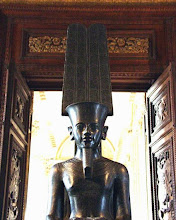Hubble Catches Saturn’s Orbital Dance in New Movies
W00t! Astronomers have created three stunning movies of Saturn and its rings, using special techniques to extend still images taken by the Hubble Space Telescope into moving pictures that show the ringed planet in novel splendor. Each movie highlights a different moment in the planet's 30-year orbit around the Sun. Two of the movies (15 seconds long and 30 seconds long) show the motion of several of Saturn's moons when the planet's rings were tilted nearly edge-on towards the Earth and Sun. Such alignments happen about once every 15 years. The third movie, at 24-seconds long, shows a clear view of Saturn's southern hemisphere when the planet's rings were most tilted toward Earth. Ray Villard of the Space Telescope Science Institute (STScI), which oversees the Hubble space telescope's research mission, said the movies show Saturn at very unique orientations relative to Earth. "When Saturn's ring plane was edge-on to earth, the ring becomes a wafer-thin slice and that's a beautiful opportunity to see the moons very clearly," he said. Another set of images used for the videos and from a similar orientation also impressed folks at STScI immediately, Villard said. "What's spectacular about that, which we noticed when the pictures first were taken, is that you can actually see the shadow from the moon skirting across the ring plane," he told Space.com. "That would only happen at a unique time, just like a setting sun." Software was used to morph a dozen images, during each of these orbital slices of time, into the hundreds of images needed for the movies. The images were taken by the Hubble's Wide Field Planetary Camera 2 in 1995 and the Advanced Camera for Surveys in 2003. Movie details The shortest edge-on ring movie shows the moons Titan and Tethys orbiting Saturn. The moons follow the rings' thin line in their orbit around Saturn. Titan's shadow is the first to appear, moving across Saturn's disk. Titan follows, with Tethys appearing on the left from behind the planet. The moons seem to move much faster than they actually do because several hours of viewing time (images were taken over a 10.5-hour span) were compressed to make the movie, which also shows bands of clouds that make up Saturn's atmosphere. The longer edge-on ring movie shows the icy moons Mimas, Enceladus, Dione and Tethys rounding Saturn. Enceladus appears first with Mimas right behind. Both moons cast small shadows on the planet, and Enceladus casts a shadow on the rings. Mimas' orbit is too inclined to hit the rings. Dione then appears with a long shadow that tracks across the ring system. Tethys appears only briefly as it moves behind the planet on the right. The images for this movie were taken over a 9.5-hour span. The maximum ring-tilt movie first shows Saturn spinning. Although the rings rotate with the planet, they appear to be stationary because the ring material is spread out so evenly. Saturn rotates on its axis every 10 hours, more than twice as fast as Earth. Next, the movie offers a close-up of Saturn's southern hemisphere. Astronomers enhanced the contrast in this sequence to make Saturn's banded cloud structure more obvious. The images for this movie were taken over a 24-hour span. NASA's Voyager and Cassini missions also have generated movies of Saturn. Cassini has been at Saturn since July 2004, studying the planet, its moons and its ring system. "Cassini has shown us those moons are so diverse that it's like finding a little solar system unto itself," Villard said. 
Source






